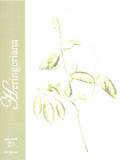Benefits of urban greenery: a case study for Buenos Aires city
DOI:
https://doi.org/10.17648/heringeriana.v4i1.54Abstract
Although in Buenos Aires urban trees are very much appreciated and it is widely acknowledged that they perform an important function in the city environment, there are no empirical studies about their role as both carbon di oxide sinks and householdenergy consumption savers. In the present paper we present the results of calculating both the gross and net carbon sequestration, and the heating and cooling emission savings made through: tree shade, evapotranspiration and wind shielding for a sample of 15,856 street trees: The total net amount of C02 emissions from energy generation projected to be saved by the sampled trees in the next 40 years is estimated at 14,754 tonnes, and it will account for 25.8% of the total amount of C02 sequestered. The maximum net co2 savings will be achieved in 16 to 20 years (2018- 2022), followed by a decrease due to the increase of co2 releases by biomass decay and tree maintenance. The extrapolation of our results to the whole city shows that street trees can store half of the co2 emisssions produced by municipal solid waste. For Buenos Aires, a city with high rates of C02 storage per tree, energy savings and C02 sequestration are important features to be considered in urban planning and management.
Downloads
Published
How to Cite
Issue
Section
License
By submitting, the authors declare that they have not submitted the work to another journal and agree to have their article published under a Creative Commons Attribution 4.0 International BY License (CC BY 4.0), which means that authors retain ownership of the copyright but anyone can use the published content provided the original authors and source are cited. The scientific, orthographic and grammatical content is the full responsibility of the authors.








